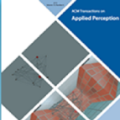5G for Railways (5G-R) is globally recognized as a promising next-generation railway communication system designed to meet increasing demands. Channel modeling serves as foundation for communication system design, with tapped delay line (TDL) models widely utilized in system simulations due to their simplicity and practicality and serves as a crucial component of various standards like 3GPP. However, existing TDL models applicable to 5G-R systems are limited. Most fail to capture non-stationarity, a critical characteristic of railway communications, while others are unsuitable for the specific frequency bands and bandwidths of 5G-R. In this paper, a channel measurement campaign for 5G-R dedicated network is carried out, resulting in a measurement-based 5-tap TDL model utilizing a first-order two-state Markov chain to represent channel non stationarity. Key model parameters, including number of taps, statistical distribution of amplitude, phase and Doppler shift, and state transition probability matrix, are extracted. The correlation between tap amplitudes are also obtained. Finally, accuracy of model is validated through comparisons with measurement data and 3GPP model. These findings are expected to offer valuable insights for design, optimization, and link-level simulation and validation of 5G-R systems.
翻译:暂无翻译




